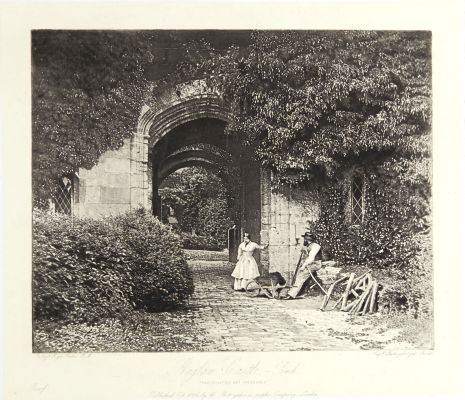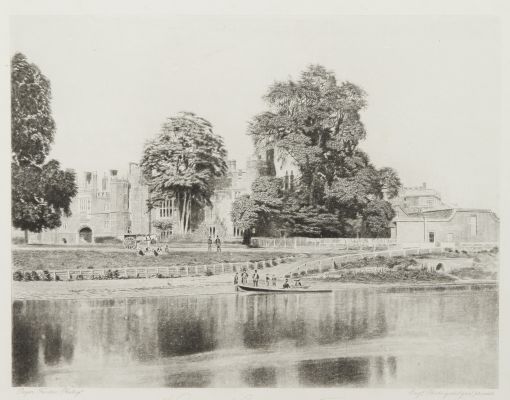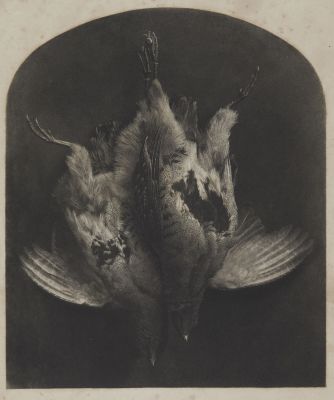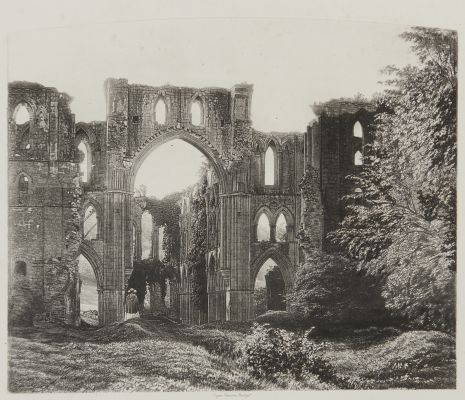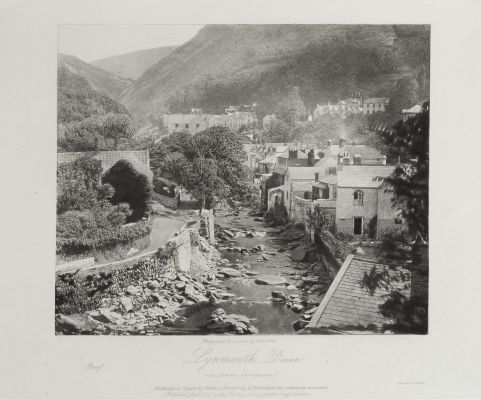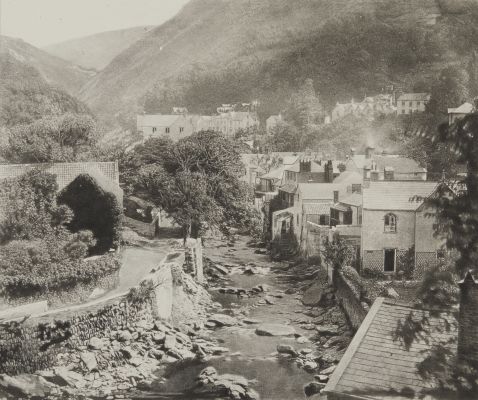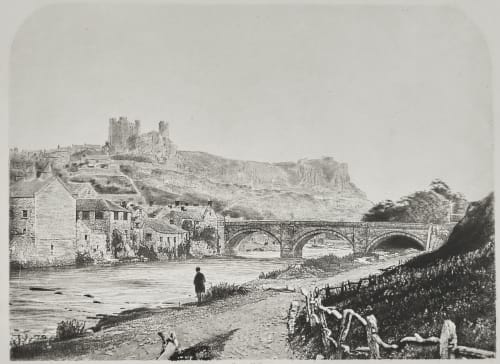
Title
Richmond YorkshireArtist
Fenton, Roger (British, 1819-1869)Publication
Photographic Art TreasuresDate
1857 plate (1855 ca negative)Process
PhotogalvanographAtelier
Paul PretschImage Size
16.5 x 22.2 cmSheet Size
35.5 x 46 cm
‘Drawn by Light and Engraved on Copper, the Plates are Printed in the ordinary Copper-Plate Printing-Press, with PRINTER’S INK AND PAPER. These materials have stood the test of time for upwards of Four Centuries’.
This very rare and beautiful example of Photogalvanography was slated to appear in the Part VI of Pretsch and Fenton’s, Photograhic Art Treasures. The periodical founded by Paul Pretsch was published by the Pretsch’s Patent Photo-Galvanographic Company, London, December, 1856, and was probably the first work of large size, illustrated by a photomechanical process and printed from intaglio copper printing plates to promote photography as art. The size was enormous, considering the conditions then prevailing, that is, 38 x 55 cm. (15 x 21 3/8 inches). “I dare say it is probably the first experiment in publishing an illustrated periodical devoted to the arts, executed in de luxe style with inserts produced by photographic printing plates.” [1] It is inconclusive weather Part VI was ever published and if so, it was in limited number as no other example of this print has been located. The only other example of this image that has been found is an albumen print located at the V&A entitled Richmond Castle and Bridge (generic title) RPS.2339-2017.
At a time when it was feared early photographs were deteriorating and might disappear altogether, photogalvanography offered impermeable copies, intended for mass production. The Photogalvanographic Company was before long bankrupted. It is routinely written off as a failure, and usually only acknowledged for printing the first successful. A study of its work, however, uncovers an intriguing struggle to overcome the complex problems inherent in new technology. The inventor of photogalvanography was Paul Pretsch. He left his native Vienna for London, and was granted Patents in 1854 and 1855. He enlisted the most famous photographer of the day, Roger Fenton, and with financial backing established his Company. A year later, the first issue of Photographic Art Treasures was released. The reception was encouraging. The Trade and everyone who had seen the photogalvanographs were reportedly ‘perfectly crazy with astonishment and delight’.
The print shows an extensive amount of hand work on the plate.
For an in depth essay on the history of Photographic Art Treasures see Paul Morgan’s essay in the ‘text’ section of the site.
References
[1] Eder, Josef M. History of Photography p.32
Morgan, Paul William, Paul Pretsch, Photogalvanography and Photographic Art Treasures 2010

